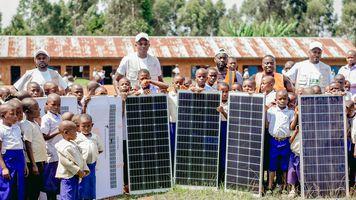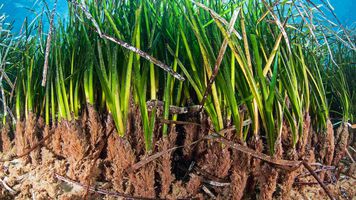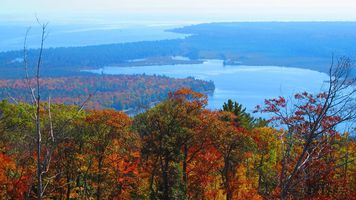The Ambition
British Land is a top UK commercial property company specializing in London Campuses and Retail & Fulfilment assets nationwide. It has a significant development pipeline, including 53 acres at Canada Water, one of the UK’s largest and most sustainable regeneration projects. Its strategy is to provide well-connected, high-quality, and sustainable buildings within an attractive environment with great amenities and strong local connections.
British Land has set a target to achieve a net zero carbon portfolio by 2030 and is focused on reducing the embodied and operational carbon emissions across its portfolio. Its ability to deliver this is a clear competitive advantage, as more and more of its customers prioritize sustainability.
The Action
British Land wanted to ensure that it could:
- Halve embodied carbon intensity in developments, to below 500kg CO2e/sqm.
- Ensure residual embodied carbon emissions are compensated for.
Since 2021 Climate Impact Partners has worked with British Land to offset residual carbon emissions using high-quality carbon credits, towards its net zero target.
We ensured that all carbon credits were:
- Certified to ICROA recognized standards.
- Nature-based solutions.
- Supporting biodiversity with a positive impact on local communities.
- Aligned with the principles and requirements of the Better Buildings Partnership and UK Green Building Council guidelines on offsetting.
The Impact
As a result of our work together, British Land has been able to compensate for residual embodied carbon emissions across two developments: 100 Liverpool Street at its Broadgate Campus which has received a host of accolades including ‘Green Building Project of the Year’ by Business Green and was nominated for the Stirling Prize, and 1 Triton Square, at its Regent’s Place Campus.
We have also worked with the team to develop a set of offsetting principles, so that as British Land continues to reduce and offset carbon emissions, the residual footprint is always offset through high-quality carbon credits from projects that deliver positive outcomes for the climate, but also for biodiversity and local communities.
What British Land Says
"We partnered with Climate Impact Partners, because of their expertise and experience in carbon offsetting. Their team gave us real confidence and provided us with an extra layer of due diligence to ensure that the projects we selected met the highest standards and made a positive contribution to local communities and the environment. They’ve also helped us codify this into a best practice process that we can follow going forward." Matthew Webster, Head of Environmental Sustainability, British Land
Why It Matters
The built environment is responsible for nearly 40% of global carbon emissions, making it a critical sector for climate action. As businesses and investors increasingly demand sustainable, low-carbon spaces, British Land’s commitment to net zero by 2030 sets a powerful precedent. By cutting emissions and using high-quality carbon offsets, they’re not just reducing their footprint—they’re shaping the future of sustainable development. Their leadership proves that climate-conscious construction is both possible and commercially advantageous, driving positive change for the industry, communities, and the planet.
Ready to take the next step on your climate journey?
Contact us to see how we can help you reduce emissions and invest in high-quality climate solutions.
We partnered with Climate Impact Partners, because of their expertise and experience in carbon offsetting. Their team gave us real confidence and provided us with an extra layer of due diligence to ensure that the projects we selected met the highest standards and made a positive contribution to local communities and the environment. They’ve also helped us codify this into a best practice process that we can follow going forward.
The Latest Insights From
Climate Impact Partners

Powering Impact: Unlocking the Value of Additionality in Renewable Energy Procurement
Ricardo Hernandez, our Renewable Energy Sourcing Associate, explores how additionality-focused Energy Attribute Certificates (EACs).
Read more
Collaborating for Climate Impact: Insights from UK Parliamentary Roundtable
Collaborating for Climate Impact: Insights from UK Parliamentary Roundtable
Read more
Inside Steelcase’s Net Zero Strategy
We sat down with Steelcase leaders to explore how they are putting putting sustainability at the core of its business strategy.
Read more











